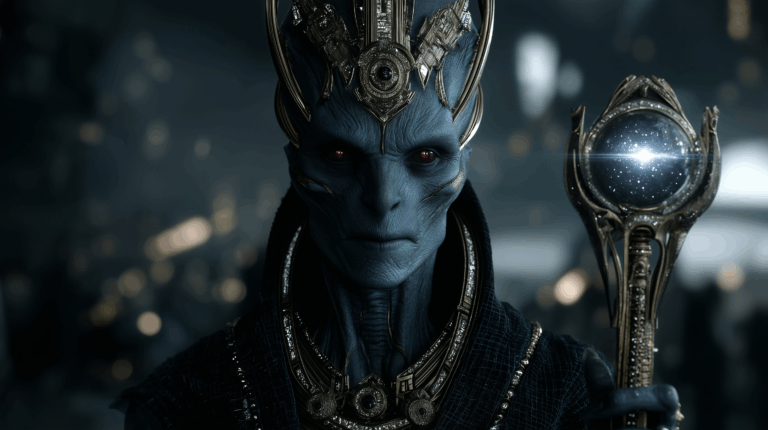Anu

Anu, recognized in Akkadian tradition as An, holds a distinguished place among the oldest and most authoritative figures in Mesopotamian mythology. Initially revered as the supreme god of the Babylonian pantheon, Anu’s role encompassed the delegation of power among other gods, enforcing decisions, and establishing kingship on Earth. As the embodiment of ultimate authority, Anu had the power to elevate other deities, a theme prevalent in ancient literature, such as Inanna’s assertion that Anu made her fearsome across the heavens. Over time, his authority became shared with rising deities like Enlil and Marduk, though Anu maintained a distinct status, symbolized by the transfer of “Anu-power,” signifying ultimate divine command.
Anu’s influence extended to cosmic creation, often credited with shaping the universe, sometimes alongside Enlil and Ea. His domain was believed to be the highest level of the heavens, represented by a star, a universal emblem of divinity consistent across script evolutions. Additionally, the Maltese cross and the horned crown were symbols of Anu’s authority. Iconographically, Anu’s symbol, a horned crown, is sometimes depicted resting on a throne. However, there are no certain anthropomorphic representations of Anu, with his influence expressed more through royal symbolism and divine insignias such as the tiara, scepter, and staff, which evolved but remained recognized in later periods.
Anu’s heavenly residence was depicted as a majestic palace where deities gathered for counsel or major decisions. Later texts present Anu as the son of Anshar and Kishar, aligning with the cosmological framework of the Enuma Elish. His consorts varied, starting with Urash in early Sumerian accounts, later shifting to “Ki”, the personification of Earth, and eventually Antu in Akkadian mythology. As the “father of the gods,” Anu was considered the progenitor of many deities, including major gods like Enlil, Enki, and Adad (or Ishkur), as well as goddesses like Inanna (also known as Ishtar). His celestial residence not only served as a divine gathering place but also as a backdrop for mythical events like Adapa’s journey, highlighting the complex dynamics between divine and mortal realms.
Adapa’s myth illustrates these dynamics well: a mortal priest, Adapa ascended to Anu’s celestial abode but declined the bread and water of immortality, suspecting deception due to Enki’s warning. This decision left Adapa mortal, showcasing the complexities of divine-human interactions and the mortal misunderstandings of divine intentions.
Anu’s worship was widespread, with major temples dedicated to him, such as the Eanna temple in Uruk, often shared with Inanna-Ishtar. Known as “Eanna” which means the “House of An”, this temple underwent multiple construction phases, reflecting its sustained importance. Rituals honoring Anu and Antu during their celestial visits were elaborate, involving sacred offerings and meticulous rituals to mark their presence. Anu’s cult persisted well into the Seleucid period, especially in Uruk, underscoring his enduring significance.
A damaged tablet from Uruk provides insights into ceremonies where Anu and Antu descended to the Exalted Court of Uruk. During these events, priests prepared offerings, and fires were lit throughout the city, symbolizing divine illumination and unity between the celestial and mortal realms. The departure of Anu and Antu was marked by the opening of the temple gate forty minutes after sunrise on the seventeenth day, symbolizing the end of their stay. Farewell hymns and blessings emphasized Anu’s role as the supreme link between the divine and earthly realms.
Historically, Anu is mentioned in early texts, though identifying his specific presence is challenging due to the ambiguous nature of the cuneiform sign “An”. The Sumerian term an translates to “heaven” or “sky,” representing “An” as the personified heavens. Interestingly, while the cuneiform sign “An” also has the value “Dingir”, meaning ‘god’ from the Akkadian “ILU”, An’s name in Sumerian is never written with this divine determinative. In Akkadian, he is known as Anu. The logogram is the number 60 was also used as a learned symbol for Anu. By the mid-third millennium BCE, Anu’s name appeared clearly in god lists, royal inscriptions, and myths, with kings like Lugalzagesi and Sargon First referring to themselves as servants of Anu, reflecting his deep-rooted association with kingship. In literature, Anu often emerges as the sovereign of the heavens, receiving the primeval division of the universe in myths like “Gilgamesh, Enkidu, and the Netherworld.” His retreat before Tiamat in the Enuma Elish marked a shift in divine hierarchy, paving the way for Marduk’s ascendancy in Babylonian tradition. Even door hinges were oiled as part of rituals to ensure divine rest during Anu’s stay, highlighting the meticulous rituals that embodied Anu’s divine authority.
According to the Anunnaki theory, Anu is the supreme leader of the pantheon, the most powerful figure in the hierarchy of the ancient gods from Nibiru. Recognized as the “King of the Anunnaki,” Anu holds sovereign rule over both Nibiru and, by extension, all Anunnaki operations on Earth. His authority is rarely questioned, and his word determines the balance of power among the deities.
Anu is the father of two major rival figures: Enlil and Enki, each born of different mothers, a factor that contributes to the intense rivalry between them. Enlil, born of Anu’s official consort, is the legal heir to the throne. Enki, though older, is born of a concubine and thus holds a different status in the succession. Anu also has a daughter named Ninmah, who plays a critical role in the genetic engineering of humankind.
Although Anu himself rarely descends to Earth, his decisions shape the course of events across both worlds. He appears directly in key moments—such as when tensions escalate between his sons or when matters on Earth threaten the Anunnaki order. Anu represents cosmic authority, divine kingship, and the embodiment of celestial law within the Anunnaki structure. His presence, though distant, anchors the entire hierarchy of the gods.